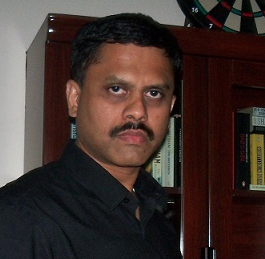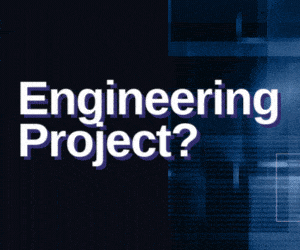
Q. What would be your organisation’s unique selling proposition (USP) for electronics design?
A. Densray’s USP is that we provide complete product design, from concept to original design manufacturing (ODM), including hardware and software, using state-of-the-art technologies that are optimised to the customer’s requirements, such as cost of production, features, performance (e.g., clock speed, amount of memory etc), time-to-market and form factor (size, shape). We do this while taking care of reliability engineering and statutory compliances such as thermal engineering, signal integrity, safety and electromagnetic interference (EMI)/ electromagnetic compatibility (EMC). To achieve this, we have a team of experts, who keep updating themselves on new technologies and components that are being introduced on a daily basis, so that the latest technology can be used in our designs to help our customers beat their competition.
Q. What are the key technologies you are working on?
A. Densray is domain-agnostic and mostly works with technology start-ups in the United States of America (USA), on cutting-edge technologies that are yet to be introduced in the market. The idea is that we are capable of developing new solutions and designs from just the customer requirements.
A few technologies we are working on are control and power systems to support the smart grid, smart solar power systems, which would connect to and communicate with the Internet over cellular mobile networks for control and monitoring purposes; ARM microprocessor (especially Freescale i.MX6-based) systems customised for applications such as point-of-sale terminals, automotive, industrial tablets; telecom systems such as routers, with interfaces such as Gigabit Ethernet, Wi-Fi ; field-programmable gate array (FPGA) designs for various applications such as telecom, especially involving multi-gigabit per second links; peripheral component interconnect express (PCIe) cards for camera or X-ray data capture on a personal computer (PC) or the server.
Q. What are the technologies you specialise in?
A. We are well-known in a niche circle for delivering high-quality hardware designs and embedded software on schedule. In many cases, the technology that we develop is new and proprietary to a customer.
Q. Are there any niche industry applications that you focus on?
A. No. We pride ourselves in our ability to provide designs for any industry segment, especially new technologies where there are no older ‘industry references’, utilising our strong fundamentals in system engineering.
Q. How do you see the IoT phenomenon? Do you see it driving business growth for India’s independent design houses (IDHs) or is it more of a marketing gimmick?
A. We believe that any technology is only as good as the benefits it offers and how it improves the users’ quality of life or commercial efficiencies. Hence, while part of it is hype, IoT has the potential to solve some pertinent problems or simplify their implementations, especially with wireless sensors and associated communication protocols. Adoption of commercial solutions will mostly be driven by return-on-investment (ROI) considerations, while some home automation solutions will be driven by the consumer’s fancy for such gadgets.
Q. Is the IoT a priority area for your firm’s future growth?
A. IoT is definitely a growth driver. Most of our projects involve IoT as a subsystem. We have designed solutions to put solar-power generation and load-control equipment on the cloud, for monitoring and control over the cellular mobile network using general packet radio service (GPRS)/ enhanced data rates for GSM evolution (EDGE)/ 3G/ global positioning system (GPS) technologies. We have also worked on a point-of-sale terminal hardware with IoT capability. We generally undertake such projects based on customer requirement.
Q. Who have you partnered with for technologies and components?
A. Densray works with almost all semiconductor vendors and many component distributors, electronic manufacturing services (EMS) vendors and printed circuit board (PCB) manufacturers, both in India and abroad. For ARM microprocessor, our choice for most projects is Freescale i.MX6 due to the excellent support structure available from the manufacturer in Bangalore. We also work with other design services companies for outsourcing some of the implementation work.
Q. Do you target only global customers?
A. We target both local and global customers, although we find the global market more viable from a business standpoint. We can create cost-effective designs for the local customers (manufacturers) too, but they find it very difficult to do the manufacturing in India due to various hurdles such as excise duty and inverted duty structure on imports, where finished goods have lower duty than those for the components. We have had customers who spent money in developing the product but were not able to manufacture it due to these hurdles. We hope that the goods and services tax (GST) regime will solve these issues.
Q. Could you tell us about your work for international clients?
A. Our work involves hardware design review and analysis, hardware system design and validation of embedded ARM computer systems, smart-grid control system hardware and Gigabit Ethernet routers.
Q. Can you name some of your leading Indian clients and the kind of projects you have done for them?
A. Some leading Indian clients are Kalki Communication Technologies Private Limited, Carmel Software Solutions, Green Infrastructure Projects Private Limited and eTrance Networks.
Projects done include customised ARM processor (Freescale i.MX6) systems, hardware circuit analysis and design for complex control systems, FPGA design, from concept to prototype, for telecommunication equipment, embedded Linux porting and device driver development and reliability engineering, to name a few.
Q. What is your marketing strategy to reach global clients? What about local clients?
A. Our current marketing, for local and global clients, is mostly via personal contacts. We have also teamed up with some USA and Europe-based design consultancies to offer our services. We provide our portfolio presentations to prospective customers and if they find that they have a matching requirement, we provide a project proposal with a fixed schedule and cost. If requirements are fluid, we sometimes work with the customer on a time and material basis to define requirements as the first phase and then move to fixed-cost turnkey model.
Q. How many design engineers would you have, related to circuit/system design and chip design? Are you looking at recruitment in the coming year?
A. Densray’s strength is in a senior team of system/ solution architects (less than 10 members). We outsource some of the implementation work such as PCB design, with reviews by in-house team members to assure quality. We also plan to recruit design engineers in junior to mid-level positions in the next 12 months.
Q. Do you hire freshers? Would you also have a training/internship programme?
A. Yes, we do hire freshers. We look for a good understanding of fundamentals and the ability to apply them to everyday engineering problems and are not specific about the college they come from. Currently, we do not have a training programme although we are open to providing internship for a few M.Tech students.
Q. What are the skill-sets that you find lacking in freshers?
A. The ability to analyse requirements and develop optimal solutions is lacking. Rather than training, it is a systemic issue. The attitude must be changed and application of the concepts learned must be given importance from day one. Students must be encouraged to learn the application of concepts that they study until they achieve a level of confidence in their ability to create optimal solutions. They should understand the trade-offs in creating a solution such as cost, power efficiency, processor speed, memory usage, number of components used, and create solutions to meet target requirements.







